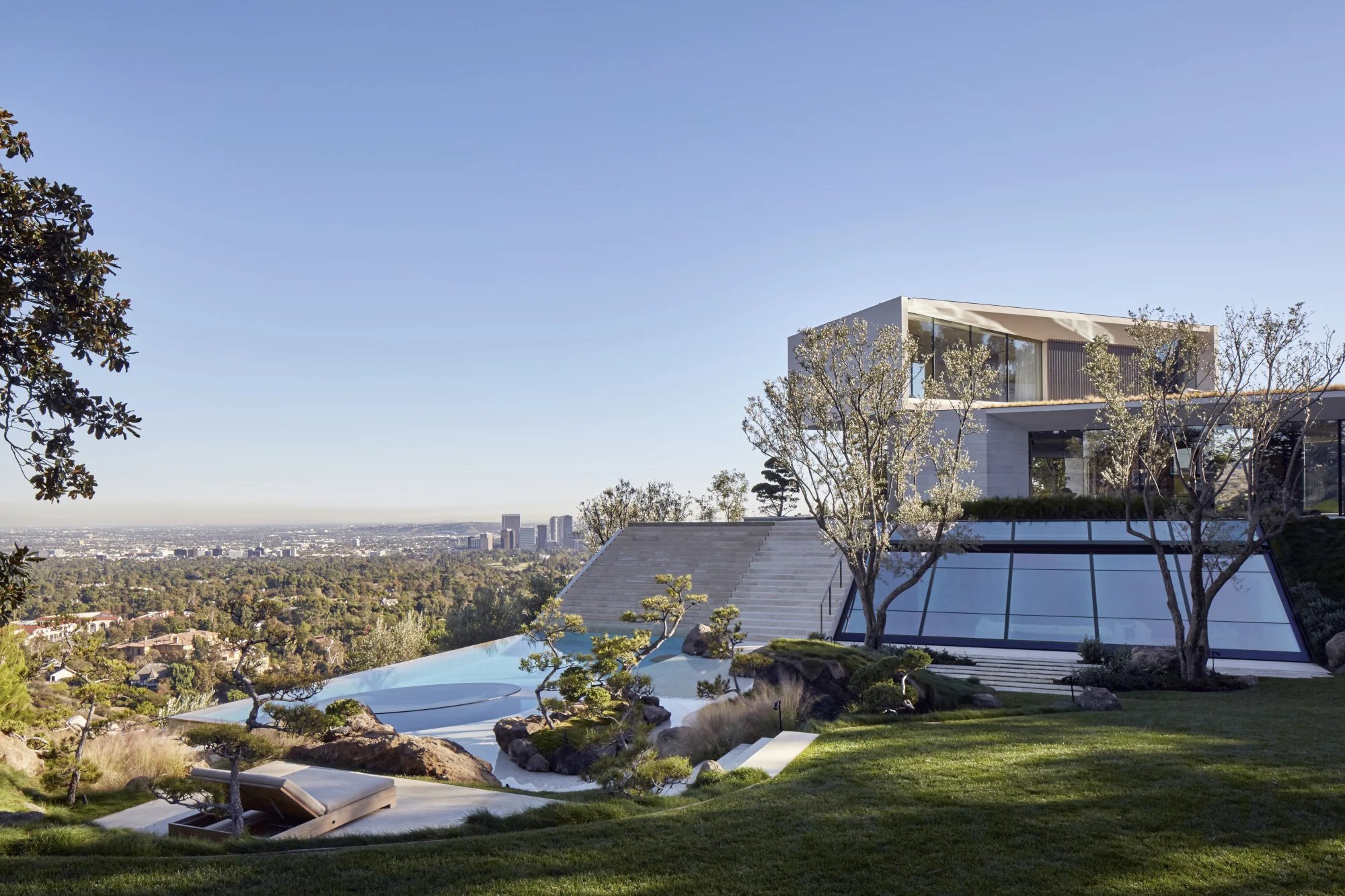Oppenheim Architecture Stacks Structures to Make Modern L.A. Villa
/This is Michael Bay’s L.A. Villa. But it wasn’t always. Chad Oppenheim, founder of Miami-based architecture firm Oppenheim, originally conceptualized the home as a Caribbean retreat. For years, the dreamy rendering was plastered on Oppenheim’s homepage; a shiny example of the firm’s imaginative and daring designs.
It wouldn’t be long before someone saw the rendering and commissioned for its build. That person was Michael Bay, a filmmaker known for action-packed big-budget blockbusters like the Transformers series, Armageddon, and Pearl Harbor. Although the concept started with Oppenheim, actually building the structure saw a much larger team. L.A. architecture firm Rios Clementi Hale Studios were the first to come on board followed by designers Lorraine Letendre and Lynda Murray, who crafted the interiors.
The 30,000-square-foot, three-story dwelling is structured of rectilinear forms, astonishing cantilevers and a stunning, hillside staircase that leads down to a swimming pool. Built on a steep, 8-acre lot, the home is nearly invisible from the street. However, upon first sight, the home’s breathtaking, column-free overhangs evoke an undeniable sense of weightlessness. Imagine two independent volumes stacked and perfectly balanced atop the house’s main level—one volume is a bedroom suite for Bay, the other for VIP guests.
Bay took a hands-on approach to the build, as any good director wood. Every angle, vista and view is a new experience. The tale begins with meticulous landscape design and the glistening reflections of the front yard pool. The story continues to unfold as you breach an entry way haloed with a louvered skylight and embark on interiors speckled with masterful artwork, such as a mirrored wall sculpture by artist Anish Kapoor. Necessary to the dwelling was a home theater designed by architect Jeff Cooper, built with a mind-boggling sounds system and state of the art acoustics.
The four-year long process of building the home was well worth the wait. Bay’s desire was not only to create a home, but a total, immersive experience that transports to another world. And so he did.
Photography by Architectural Digest photographer Roger Davies
























